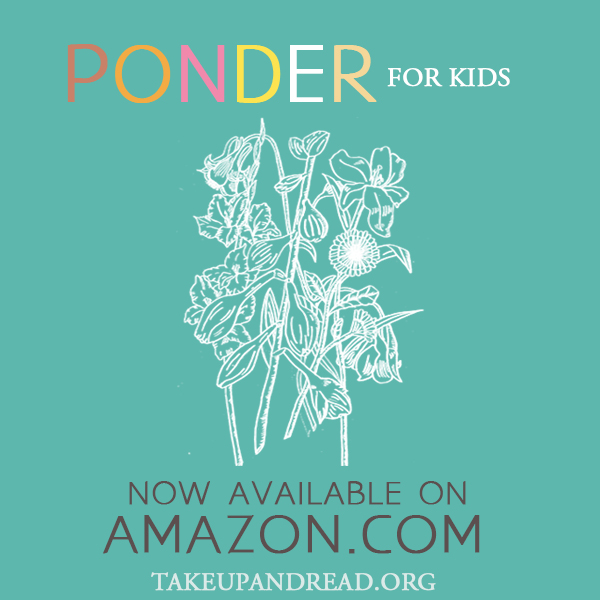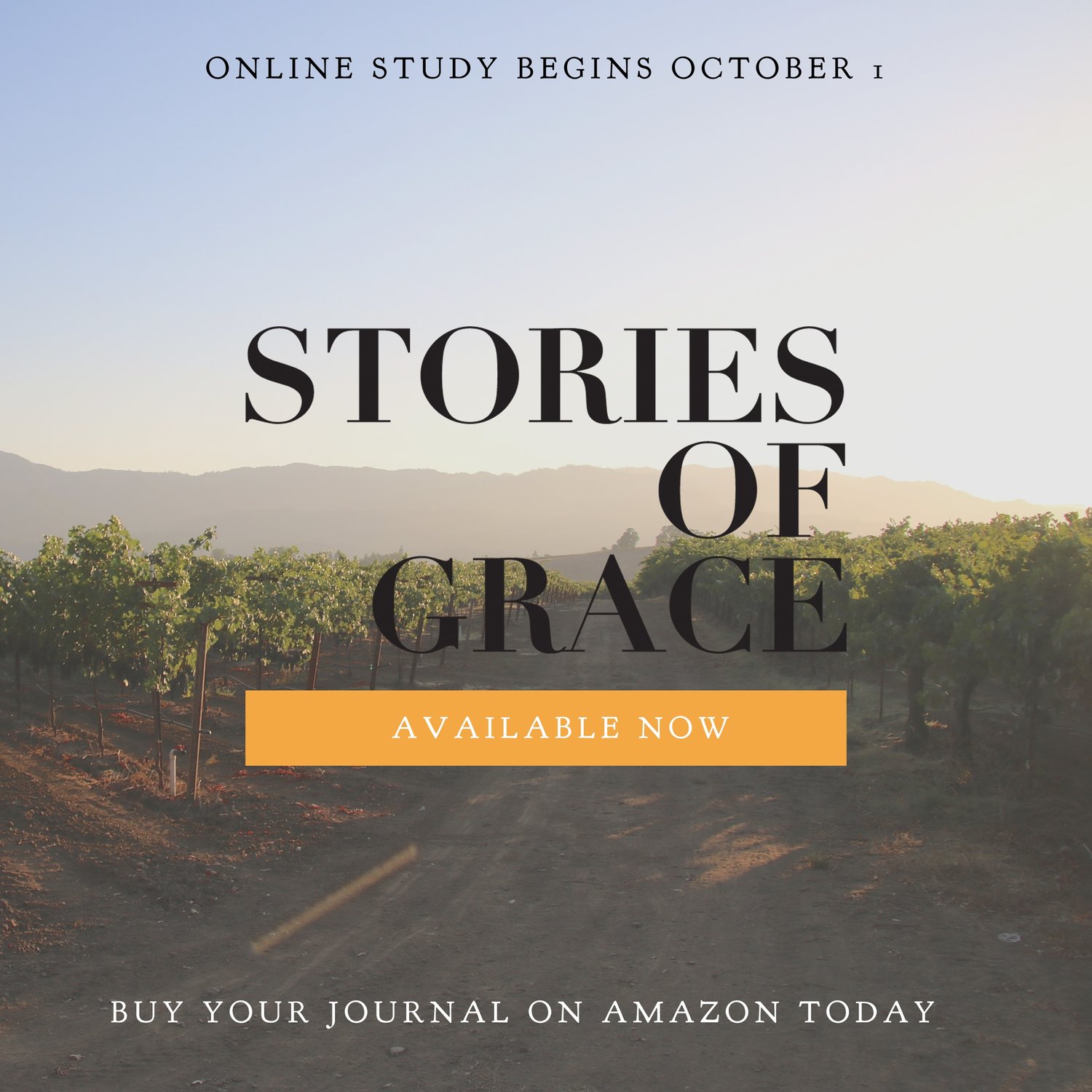Charlotte Mason Summer Study: Education is a Life
/ Education is a life! Isn't that the truth?
Education is a life! Isn't that the truth?
I think I'm most aware of this truth when I consider how much I've been educated since leaving formal education. First, there was a "unit study" on marriage, with a little rabbit trail on weddings. Running along at the same time was a study of real estate. These studies were followed quickly by an intensive study of pregnancy and childbirth. Then, there was the all night cramming as I learned about breastfeeding and launched a lifelong study of child development. All too soon, we were knee deep in books about surviving cancer. That's a lot of learning in the first three years after college!
The common thread throughout these studies was my own intense interest. I wanted to know. Instinctively, I searched out the best resources: books written by people who cared about the subject at hand and long talks with experts in the field. And there was prayer. My husband and I prayed incessantly through that time of intense education.
When I consider the education of my children since then, there are certainly similarities. I have tried to provide for them in our home and in our adventures together away from home an education that is infused with living ideas. I've tried to bear in mind always the admonition of St. Edith Stein: "The children in school do not need merely what we have but rather what we are." And so I have hoped and prayed and worked to give them the best of what I am.
In Education Is...we read "that children should be fed a great intellectual and moral ideas through a generous curriculum." As we plan, let us plan for the banquet. Let them feast on great ideas, because "only those nourishing ideas become part of the child; mere knowledge does not." We know this to be true when we look over our own education, both in school and out. We know that what we have retained, what has become a part of us are the the good, the beautiful, and the holy--the things that mattered to us. We plan a curriculum with the intention of bringing the best of what the world has to offer into our homes and the hearts of our children. In Catholic Education: Homeward Bound, Mary Hasson and Kimberly Hahn encourage us not to be afraid:
Authentic Catholic education relies on and includes all that is true, good, and beautiful---in short, everything that points the way to God, the source of all truth, goodness and beauty.
It's a big world, full of God's endless bounty; why limit ourselves to only those resources in the boxed curriculum? Let's look at some of the particular methods of a Charlotte Mason-inspired education:
~Living Books
My favorite "definition" of living books comes from Educating the WholeHearted Child.
- A living book is written by a single author, a real and knowable person
- A living book is a literary expression of the author's own ideas and love of the subject
- The author of a living book addresses the reader as an intelligent and capable thinker
- In a living book, ideas are presented creatively in a way that stimulates the imagination.
I stop now and consider my plans for next year. Are living books the backbone of the studies? Am I choosing and presenting to my children the best of what passionate authors and illustrators have to offer?
~Narration:
I admit that writing seems to come as naturally as breathing in my household. My children write almost as readily as they play soccer. And the similarities do not escape me. My husbands writes sports television shows. His area of expertise is soccer. I write a little too;-).(I do not play soccer.) Narration is natural in our verbal household and even my student who struggles most is able to write well. What exactly is narration?
The cornerstone of a real life, real books education is narration. When a child is read story or reads it himself, he is required to retell it, with as much detail as possible, after paying attention to the first and only reading. After a trip to an historical site or a day in an apple orchard, the same method is employed, encouraging the child to use rich, descriptive language to tell about what he knows and cares about. young children narrate orally, with Mom occasionally transcribing what is said. Some young children will naturally use drawings to express themselves and these, too are narrations, either with or without captions.
The benefits to this approach are numerous.Because they are required to narrate after hearing a story or passage read only once, children learn quickly to pay close attention to that reading.They also learn to pay the same attention to the many facets of a field trip. The more details they notice, the more detailed their narrations.Children as young as four can be trained to be very observant and to retell stories and events with amazingly complex, textured language and sentence structure. It is the ideas in the stories or the experiences that fuel the narrations. These products, child-produced oral histories or essays, are a far cry from fill-in-the-blank workbook pages or the questions at the end of a textbook chapter.
Narrations require that a child engage his heart. He must be personally connected with the idea being presented in order to recount it. ~ Real Learning
~Copywork:
For small children, copy work is a handwriting practice: First a letter, then a word, then a phrase, then a verse. All are done to the very best of the child's ability and saved in the notebook. Excellence is expected.
As a child matures, copy work is the careful study of literature. It is a child's chance to become familiar with the test of great writers, word by word and phrase by phrase. A child copies the work and in doing so learns the intricacies of it on an intimate level. ~Real Learning
~Dictation:
Of dictation, Laura Berquist writes,
Studied dictation is a useful tool in the development of children's writing ability. First, the children are working from models of good writing. They see and study correct usage, punctuation, and spelling, as well as excellent writing of various styles. In the old days of Catholic education, schools were financially poorer, but they turned out excellent scholars as well as faithful Catholics. One reason for this was that neither the children nor the schools could afford books, so lessons were copied and then worked on. This meant that the children were continuously exposed to models of correctly written material. This is another example of the truth that children learn by imitation.~ The Harp and the Laurel Wreath (an excellent source of dictation material)
So, how, exactly does this work?
For the very young child, I simply dictate the words and sentences from the phonics patterns and storybooks we are studying. Our phonics lessons are extracted from rhyming books primarily. As the student becomes a capable reader, dictation passages are taken from copy work material. First, we read and discuss material, noting grammatical patterns or spelling of note, The next day , the child copies it (this may take two days). The third day, he studies it. Then I dictate to him as he writes it. The copy work and final dictation go in the the notebook.
The older child's spelling comes from his dictation work and his own writing. I pull misspelled words from his writing, write them correctly and have him copy them ten times. If I notice a pattern to his mistakes, I will have him copy several words that have the same pattern [the AVKO books are a great resource for pattern lists].~Real Learning
~Picture Study:
The study of pictures should not be left to chance, but they should take one artist after another, term by term, and study quietly some half-dozen reproductions of his work in the course of a term...We cannot measure the influence that one or another artist has upon the child's sense of beauty, upon his power of seeing, as in a picture, the common sight of life; he is enriched more than we know in having really looked at even a single picture. ~Home Education
~Music Study:
Music appreciation follows a similar pattern. I choose one composer every six weeks. We read a little about his life and listen to a Music Masters CD which intersperses his music with an interesting biography.Once a week, we repeat the cassette. Then we play the music often--very often--for six weeks. At the end of the six week period, the children offer narrations of the composer's life ~ Real Learning.
In order to communicate the message entrusted to her by Christ, the Church needs art. Art must make perceptible, and as far as possible attractive, the world of the spirit, of the invisible, of God. It must therefore translate into meaningful terms that which is in itself ineffable. Art has the unique capacity to take one or other facet of the message and translate it into colors, shapes, and sounds which nourish the intuition of those who look or listen. ~John Paul II, Letter to Artists
~Book of Centuries:
From the time they are very little, I teach my children to keep notebooks, journaling what they have learned in history. These notebooks become the Book of Centuries . At least once a week, I type their oral narrations for them to illustrate and to place in the
notebook. The notebook is organized chronologically, in order to facilitate the child physically placing an event into the proper time period. Simply insert a tabbed divider for each century into the notebook. The child files narrations, maps, and other drawings behind the tabs. The organization will help them develop a concept of time.~Real Learning
Do take advantage of the free Book of Centuries download at Simply Charlotte Mason.
~Hands on Math:
Well, all I can say here is that those gnomes sure are hands-on(look for more adventures in the fall)! And we like Math-U-See, too.
~Nature Study:
If you are a nature study novice or if you are in need of a reminder with regard to hows and whys of nature study, start with MacBeth's Opinion. Little else is necessary to get you started.MacBeth is the the master of outdoor education and an inspiration to everyone who is blessed to hear or read her wisdom.
In Charlotte's words:
We must assist the child to educate himself on Nature’s lines, and we must take care not to supplant and crowd out Nature and her methods with that which we call education. Object-lessons should be incidental; and this is where the family enjoys a great advantage over the school. The child who finds that wonderful and beautiful object, a “paper” wasp’s nest…has his lesson on the spot from father or mother~Parents and Children.
The plan is to discuss Hours in the Out-of-Doors: A Charlotte Mason Nature Study Handbook right after we finish Laying Down the Rails. And Laying Down the Rails starts next week!
Tell us all about how education is a life in your home and and how you implement Charlotte Mason's methods as you and your children pursue an authentic education. Be sure to leave a link to your post. If you don't have a blog (or even if you do), feel free to join the conversation at the message board. The rest of the series is here.





